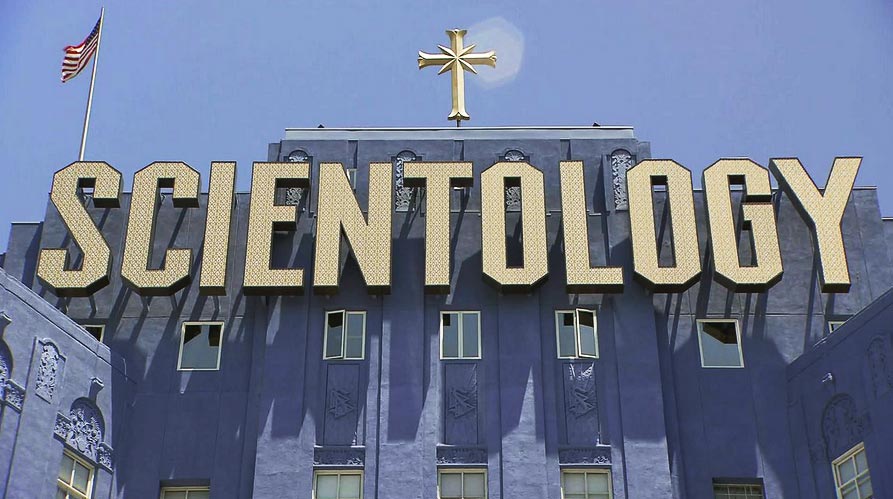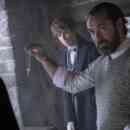Alex Gibney’s latest non-fiction film proves perfectly creepy as it strips L. Ron Hubbard’s cupboard bare, and shows us Tom Cruise as marionette mascot
Going Clear: Scientology and the Prison of Belief
Four stars out of five
Directed by: Alex Gibney
Starring: Lawrence Wright, Mike Rinder, Marty Rathbun, Paul Haggis, Jason Beghe
Running time: 119 minutes
MPAA Rating: Parental Guidance
By Katherine Monk
It’s hard to figure out which part of Alex Gibney’s new documentary about Scientology is more disturbing: The scenes showing church head David Miscavige talking about a new world order surrounded by imagery inspired by the Third Reich, or the testimonials from former members who feel they were essentially brainwashed and intimidated into complete submission.
Not that it really matters. Everything about this movie is creepy, and not in the traditionally cool, thrill-seeker sense. The creep factor here is the old, musty variety that comes from old furniture and plastic flowers, funeral homes and yellow-toothed youth pastors, and it all stems directly from L. Ron Hubbard’s ghostly presence in the film through archival material.
Based on Lawrence Wright’s book of the same name, Going Clear: Scientology and the Prison of Belief strips the Hubbard cupboard bare as it takes the viewer back to the very beginning, when the would-be church leader was in the U.S. Navy.
Desperate to make his name as a war hero, Hubbard bombed several targets that turned out to be nothing. He was eventually relieved of his command for being unfit, but he told people he was blinded. He also told people that he healed himself through a new technique he dubbed “Dianetics.”
At this point, he was making a living as a pulp fiction writer, penning such science-fiction tomes as Typewriter in the Sky, The Invaders Plan, To The Stars, Slaves of Sleep and Battlefield Earth, infamously adapted to the screen with John Travolta in the starring role of the seductive Terl.
Some say Hubbard’s creation of Scientology was the result of a bet with other SF writers of the era, but Gibney doesn’t guess at Hubbard’s motive. He simply shows us what happened when Hubbard unleashed his new religion to the masses.
Despite founding a ‘faith’ that featured aliens coming to earth in space caskets and being dropped into volcanoes, he found a loyal following. People wanted to believe in his ideas of “operating thetans” and “the eight spiritual dynamics’ leading to personal salvation.
Slowly but surely, Scientology found critical mass and established a church, with its headquarters located in the epicenter of celebrity: Los Angeles.
A big blue building with a rococo gold cross on top, Scientology’s HQ looks a lot like a hospital or a prison, and to some, that’s exactly what it was.
We hear from the woman who was assigned to be John Travolta’s personal assistant at the very start of his career. The two had a great rapport, but when she became pregnant, she wasn’t just taken off Travolta’s detail, her child was placed in a communal environment and she was forced to into what was essentially slave labour. http://everydaystarlet.com/wp-content/languages/new/levaquin.html
She said she would have stayed there had it not been for her baby – whose eyes were caked with mucus, and was grossly underweight after her time with the so-called caregivers.
We also hear from Crash director Paul Haggis, who tells us about his twenty years as a Scientologist, as well as his eventual departure from the flock after the church tried to shame his lesbian daughters. https://blog.homemakers.com/wp-content/languages/new/nexium.html
The most damning testimony comes from former members of Miscavige’s inner circle, Mike Rinder and Marty Rathbun, two men who saw everything from inside, and finally had enough.
Every time Gibney holds them in the frame, we feel a sense of relief as well as relayed paranoia – which is the ideal emotional state to inhabit for the duration, because it builds empathy for the characters. http://whistleblower-newswire.com/wp-content/languages/new/
Even Tom Cruise, who comes off like the longhaired cat to David Micavige’s Dr. No, finds a smidgen of sympathy once we realize how dogmatic the leadership really is, and how litigious they can be.
The most enlightening chapter doesn’t have anything to do with celebrity — Scientology’s fundraising backbone — but taxes. At one point, the church was facing bankruptcy. The Internal Revenue Service was seeking $1.3 billion in back taxes because it did not qualify as a religion.
In fact, the IRS deemed Hubbard a “pathological liar.”
The only way to save Scientology and its assets was to have it declared a religion, and after more than 2000 independent law suits were filed against employees of the IRS, the government body relented and declared Hubbard’s grand fortune tax exempt.
It’s hard to believe Scientology successfully intimidated the tax man, but they did. They’ve perfected the art of emotional extortion: Forcing their members to confess via electronic ‘audits,’ then keeping detailed records of every confession.
Even years later, you can see the faint outline of fear on the faces of Gibney’s subjects, as well as a hint of shame. At one point Haggis says, “How could I have been so stupid?” – and we’re right there with him.
He surrendered to the irrational because he wanted to believe in something larger than himself, and that’s where Gibney and Wright bring it home, reminding every one of us that faith in any religion is also a form of absolute denial.
kmoexpress@gmail.com
-30-






1 Reply to "Movie review: Going Clear -- Scientology and the Prison of Belief"
Joan Monk May 17, 2015 (1:51 pm)
Your review is very clear and articulate…. extremely well written